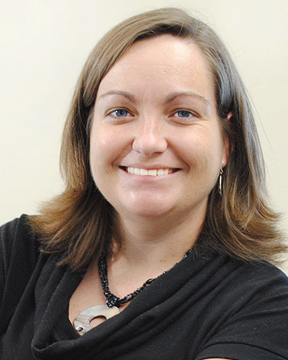Teaching Innovations at Vanderbilt: Garrett Tate, Lily Claiborne, and student analysis of real-world data
By Faith Rovenolt, CFT undergraduate intern
It’s pretty hard to not find volcanoes exciting. That’s part of the reason why I think a new active learning activity in EES-1510: The Dynamic Earth: Introduction to Geological Sciences, is so cool. The other reason I think it’s amazing is that it represents a great example of an activity that engages student learning. It and the course in general highlight several great practices in the classroom to increase engagement.
 Dr. Lily Claiborne teaches the course in the fall and Dr. Garrett Tate teaches it in the spring. Tate adapted an activity from GETSI—GEodesy Tools for Societal Issues—and the two recently implemented it in Claiborne’s classroom. The activity was originally designed as a gallery walk, where students walk around the classroom going from poster to poster with information and questions written by the group ahead of them to collectively solve a problem. Tate was introduced to this at Earth Educators’ Rendezvous 2019, a conference co-hosted this summer by Vanderbilt that Claiborne helped organize.
Dr. Lily Claiborne teaches the course in the fall and Dr. Garrett Tate teaches it in the spring. Tate adapted an activity from GETSI—GEodesy Tools for Societal Issues—and the two recently implemented it in Claiborne’s classroom. The activity was originally designed as a gallery walk, where students walk around the classroom going from poster to poster with information and questions written by the group ahead of them to collectively solve a problem. Tate was introduced to this at Earth Educators’ Rendezvous 2019, a conference co-hosted this summer by Vanderbilt that Claiborne helped organize.
Tate modified the original project by Kaatje Kraft and Rachel Teasdale, in which students work through several forms of data to perform a risk assessment on a volcano (based on real data from Mount St. Helens in 2004). Tate shortened down the original project and replaced full-sized posters designed to hang on the wall with smaller 11” by 17” handouts. Students work with other students to form a group and several groups come together to form a supergroup. Each group in a supergroup is given one of the handouts and a packet with background information for one kind of dataset used in the problem. The first group to get each of the handouts writes a summary of the background information in the packet. The handout, and not the packet, is handed to the next group who then examines the new type of data, answers the next question on the handout, and so on and so forth, making each group rely on the information from the group before them to analyze the data and come to a conclusion collaboratively. A Tophat poll is then used to determine the results of the students’ analysis—in this case, the risk assessment of the volcano.
After the poll, students watched a video in class on how the real world data was collected and analyzed by the scientists working on it. Not only did the students largely come to the same conclusions, but they got to be exposed to the reality of science, in which scientists don’t always know if they’re right. Some students expressed frustration because of this, asking how to know for sure if a volcano is a risk. Tate and Claiborne appreciated this response—it shows that they are exposing students to the reality of scientific decision making, which isn’t always as clear as a lecture might make it out to be. When Tate teaches the course in the spring, he is now planning to include a specific discussion to go over this.
Some things that may help other teachers adapt gallery walks or other active learning activities into their larger courses are:
- Everything takes longer than you think. Be selective in what you give students, prioritizing the most important information to give to them.
- Create a specific timeline. Claiborne’s class was able to get through the whole activity, partially because she set out time limits for each question and activity to move the process along.
- Used assigned seats. Claiborne lets students choose their own assigned seat. I think this is a great idea, as most students pick one seat and use it all semester anyway. Claiborne also uses the seating chart to learn her students’ names, and students are aware that the class will do group work and that where they chose to sit will impact which groups they are in. That also makes it easier to group students for an activity like this.
- The class has already done group work before this activity. Claiborne’s students aren’t surprised that they’ll need to work with other students.
The other active learning techniques and group work Claiborne uses in her classroom include think-pair-share and jigsaw. These and the larger analysis of real world data described here align with the courses learning goals: to encourage general scientific literacy in students, an appreciation for science even if they don’t go into a STEM field, and an understanding of the impact of the Earth on humans and humans on the Earth.

Leave a Response